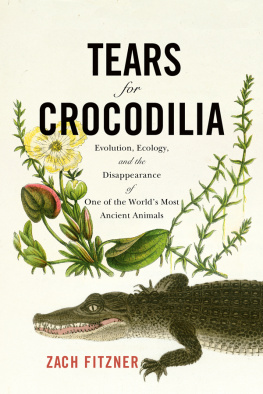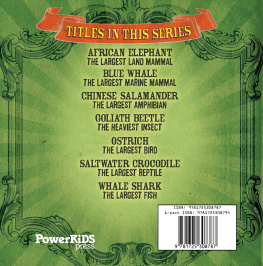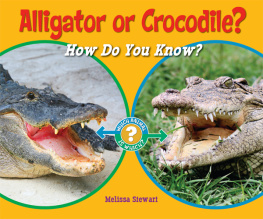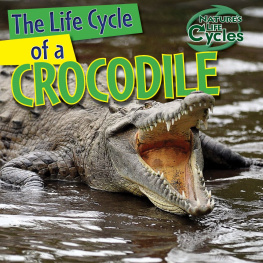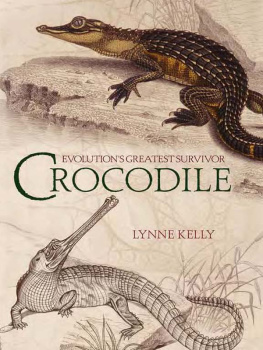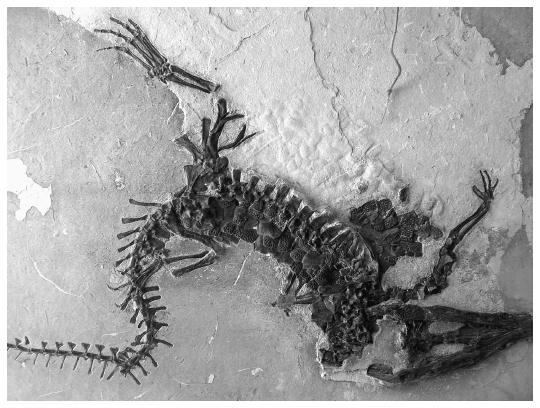Zach Fitzner - Tears for Crocodilia: Evolution, Ecology, and the Disappearance of One of the Worlds Most Ancient Animals
Here you can read online Zach Fitzner - Tears for Crocodilia: Evolution, Ecology, and the Disappearance of One of the Worlds Most Ancient Animals full text of the book (entire story) in english for free. Download pdf and epub, get meaning, cover and reviews about this ebook. City: Yardley, year: 2022, publisher: Westholme Publishing, genre: Science. Description of the work, (preface) as well as reviews are available. Best literature library LitArk.com created for fans of good reading and offers a wide selection of genres:
Romance novel
Science fiction
Adventure
Detective
Science
History
Home and family
Prose
Art
Politics
Computer
Non-fiction
Religion
Business
Children
Humor
Choose a favorite category and find really read worthwhile books. Enjoy immersion in the world of imagination, feel the emotions of the characters or learn something new for yourself, make an fascinating discovery.
- Book:Tears for Crocodilia: Evolution, Ecology, and the Disappearance of One of the Worlds Most Ancient Animals
- Author:
- Publisher:Westholme Publishing
- Genre:
- Year:2022
- City:Yardley
- Rating:4 / 5
- Favourites:Add to favourites
- Your mark:
Tears for Crocodilia: Evolution, Ecology, and the Disappearance of One of the Worlds Most Ancient Animals: summary, description and annotation
We offer to read an annotation, description, summary or preface (depends on what the author of the book "Tears for Crocodilia: Evolution, Ecology, and the Disappearance of One of the Worlds Most Ancient Animals" wrote himself). If you haven't found the necessary information about the book — write in the comments, we will try to find it.
Seventy million years ago in what would become North America, a monstrous thirty-five-foot-long Cretaceous crocodile lurked on a marshy riverbank. Springing suddenly, its huge jaws trapped and crushed a juvenile hadrosaur. Today, the remains of that ancient crocodile are being painstakingly reconstructed in Colorado, where naturalist Zach Fitzner continues his life-long fascination with this amazing animal family.
In Tears for Crocodilia: Evolution, Ecology, and the Disappearance of One of the Worlds Most Ancient Animals, Fitzner tracks the evolution of crocodilians from prehistoric predators to modern endangered wildlife, using his own experiences with these reptiles as a lens to understanding wildlife conservation and our relationship with the natural world. Traveling the world to interact with crocodiles, from observing alligators in a wildlife refuge in Texas and paddling a canoe in the Everglades searching for crocodiles to trekking the jungles in Nepal to find endangered gharials, the author expresses a wonder in exploring these diverse ecosystems, making a connection between crocodilians and the lands they live in. As the story follows crocodilians, it also illuminates their often complicated relationship with humans, from crocodile cults in ancient Egypt to American alligators living on golf courses. Fitzner also closely examines the dark side of this relationship, including habitat destruction and poaching as well as the mechanistic view of traditional conservation that turns these magnificent animals into agricultural products. Tears for Crocodilia delves deeply into issues of wildlife conservation, ethics, and how we can coexist with other creatures. It is also a tribute to a magnificent group of animals, survivors from the age of dinosaurs.
Zach Fitzner: author's other books
Who wrote Tears for Crocodilia: Evolution, Ecology, and the Disappearance of One of the Worlds Most Ancient Animals? Find out the surname, the name of the author of the book and a list of all author's works by series.

